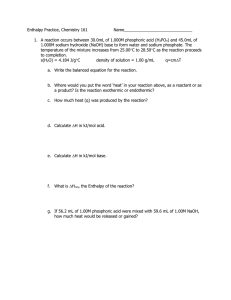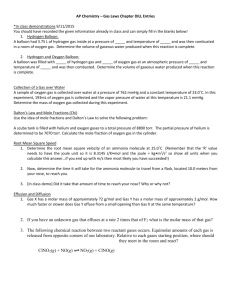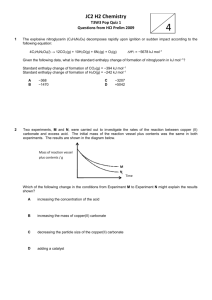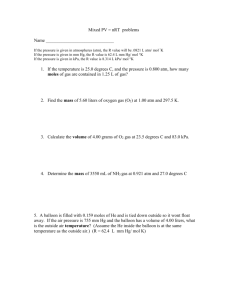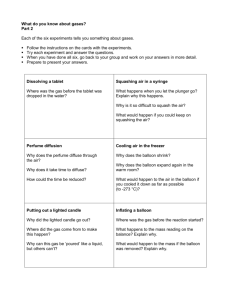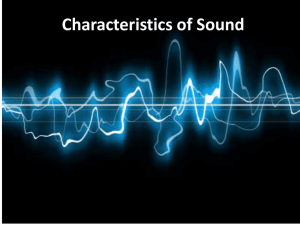Review with answers
advertisement
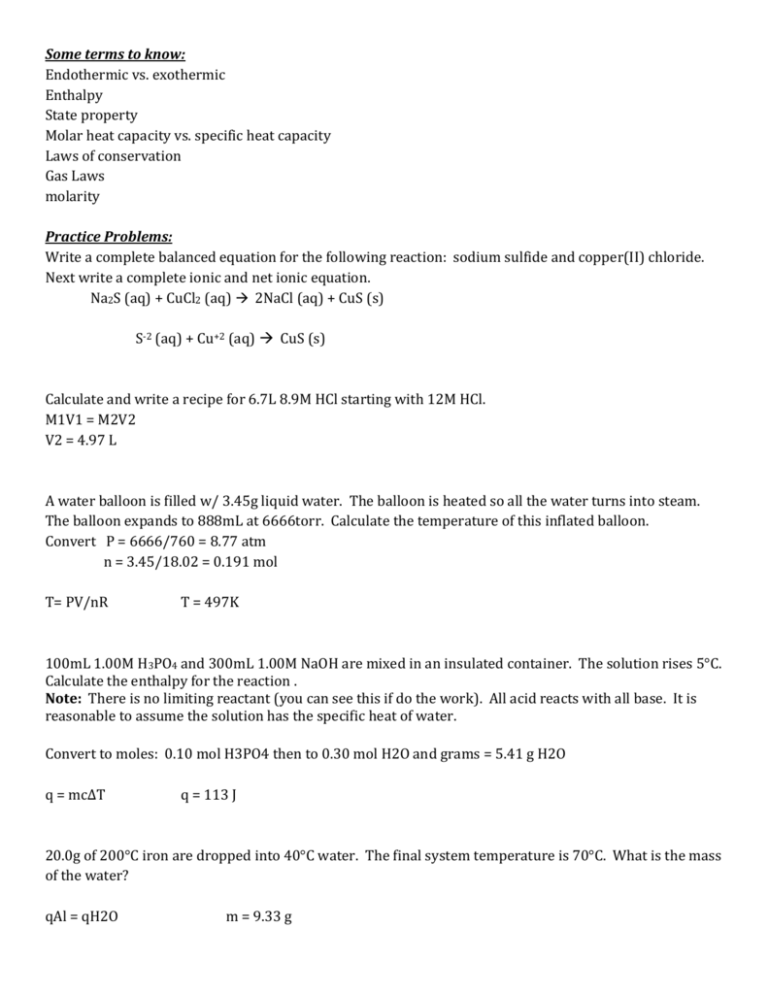
Some terms to know: Endothermic vs. exothermic Enthalpy State property Molar heat capacity vs. specific heat capacity Laws of conservation Gas Laws molarity Practice Problems: Write a complete balanced equation for the following reaction: sodium sulfide and copper(II) chloride. Next write a complete ionic and net ionic equation. Na2S (aq) + CuCl2 (aq) 2NaCl (aq) + CuS (s) S-2 (aq) + Cu+2 (aq) CuS (s) Calculate and write a recipe for 6.7L 8.9M HCl starting with 12M HCl. M1V1 = M2V2 V2 = 4.97 L A water balloon is filled w/ 3.45g liquid water. The balloon is heated so all the water turns into steam. The balloon expands to 888mL at 6666torr. Calculate the temperature of this inflated balloon. Convert P = 6666/760 = 8.77 atm n = 3.45/18.02 = 0.191 mol T= PV/nR T = 497K 100mL 1.00M H3PO4 and 300mL 1.00M NaOH are mixed in an insulated container. The solution rises 5°C. Calculate the enthalpy for the reaction . Note: There is no limiting reactant (you can see this if do the work). All acid reacts with all base. It is reasonable to assume the solution has the specific heat of water. Convert to moles: 0.10 mol H3PO4 then to 0.30 mol H2O and grams = 5.41 g H2O q = mc∆T q = 113 J 20.0g of 200°C iron are dropped into 40°C water. The final system temperature is 70°C. What is the mass of the water? qAl = qH2O m = 9.33 g Determine the ∆H° for the following reaction: Look up in appendix MgO(s) + H20 (l) Mg(OH)2 (s) ∆H⁰= products – reactants ∆H⁰= - J
